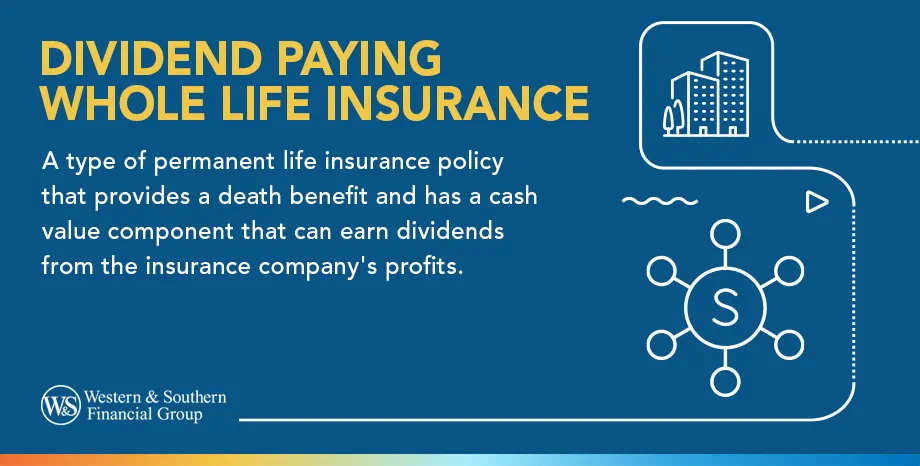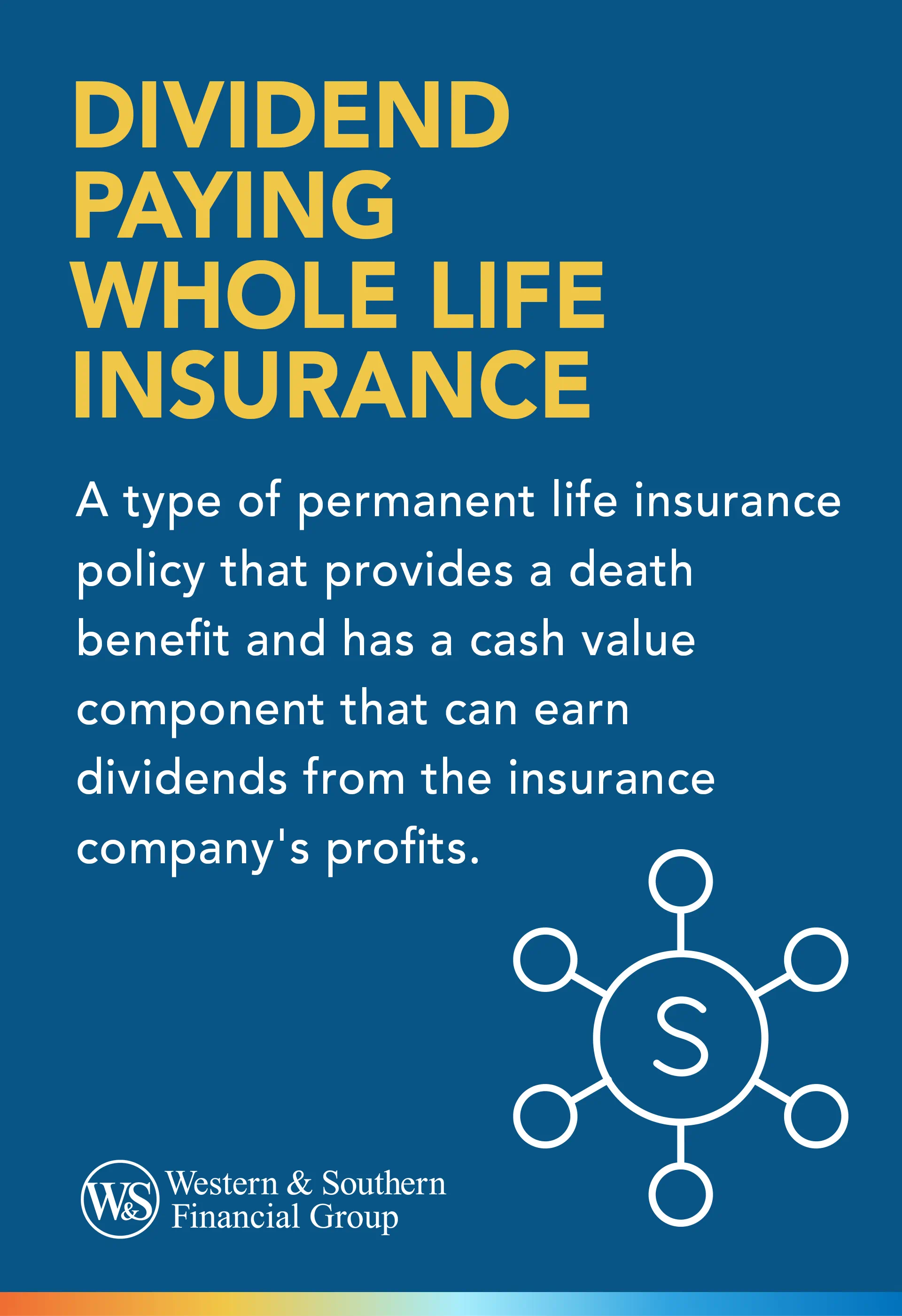

Table of Contents
Key Takeaways
- Dividend-paying whole life insurance allows customers to participate in the insurer's success.
- Dividends from participating policies are not subject to income tax, but taxes may apply if withdrawals exceed payments.
- Compared to non-participating policies, dividend-paying policies can potentially accelerate cash value growth and offer lower net costs over the long term.
- Dividend payments can be used to purchase additional coverage, increasing cash value and death benefits.
- Dividends can be used to build assets and leave a larger death benefit, but they should be seen as a bonus rather than a guaranteed feature.
Whole life insurance policies generally offer a cash value that grows over time. But some policies, known as dividend-paying whole life insurance, also offer the potential for payouts, depending on certain factors. But how does this work — and how might it work for you?
Dividend-Paying Whole Life Insurance Defined
Dividend-paying whole life is life insurance that may pay dividends if your insurance company performs well financially. These policies are sometimes referred to as "participating," because customers can participate (to a limited degree) in the success of an insurance provider. A traditional policy, conversely, is sometimes called "non-participating," as the provider's performance does not influence the policy's cash value.
With dividend-paying whole life, insurers may pay dividends based on the policy's amount of insurance in force. Dividends are an optional payment from the insurer. The more coverage your whole life insurance policy has in force, the more you could potentially receive in dividends.
Unlike other types of dividends (such as from investment products), you generally don't have to pay income tax on dividends from a participating whole life policy. The IRS typically treats those payments as a return of unused premiums. That said, depending on how you take withdrawals, you could eventually owe taxes if you receive more than your total payments into a life insurance policy.
Are Dividends on a Whole Life Insurance Policy Taxable?
In general, you do not have to pay income tax on dividends you receive from a participating whole life policy because the IRS typically considers such payments as a return of your unused premiums.
Keep in mind, however, that you could ultimately owe taxes, depending on how you make withdrawals, if you receive more than the total amount of premium payments you make into a life insurance policy.
Dividend-Paying vs. Other Types of Policies
With whole life insurance policies, you receive an illustration showing increasing cash values over time — a road map of where your policy can end up if everything goes according to plan. But dividend-paying policies can potentially accelerate that growth or change other aspects of your policy.
Insurers set premiums based on their expected income and expenses — as well as their need to remain competitive. If the insurance company's actual results are better than expected, several outcomes are possible, depending on your insurance type:
- With non-dividend-paying life insurance policies, the insurer retains profits made as a result of favorable performance.
- With dividend-paying policies, the insurer can pass some of the earnings on to customers. Customers with participating policies pay higher premiums due to potential dividends.
However, in some cases, dividends and cash values can accumulate in ways that result in dividend-paying policies actually having a lower net cost than non-participating whole life policies over the long term.
Dividend Payment Options
You have several options when it comes to any dividends you may receive. (These options generally vary by insurer.) Some of the most common include:
- Cash: You could take the money and spend it on anything you want. The insurer would send a check or transfer funds directly to your bank.
- Reduced premium: You could put the funds toward your next premium, which would reduce the amount you'd need to pay out-of-pocket.
- Accumulate at interest: You could leave the money with your insurance company, where it would earn interest. Those funds might be available for withdrawal, or they might be added to the death benefit.
- Paid-up additional insurance: You could use the dividends to purchase more dividend-paying whole life insurance. Doing so could further increase your total cash value, which could then lead to increasing dividend payments. Assuming the insurer continues to pay dividends and you use this option, you can potentially experience compound growth of your cash value and a significantly higher death benefit.
Leverage dividends to maximize your benefits. Get a Life Insurance Quote
How to Use Dividends
You may want to ask your financial representative for advice on how to best use dividends for your family. Many strategies build on the concepts listed below.
- Asset-building: By reinvesting dividends and using the paid-up additions option, you can accumulate additional cash value in your whole life policy over an extended period. That cash value may be available for loans or withdrawals as financial needs arise later in life.
- Leaving a legacy: Again, the paid-up addition option can lead to an increasing death benefit if you re-apply dividends over several decades. As a result, your beneficiaries may have access to a higher death benefit from your policy than if you hadn't re-applied your dividends. Policy loans accrue interest, which may create an income tax liability, could reduce the policy's account value and death benefit, and may even cause the policy to lapse.
The Bottom Line
Remember, dividend-paying whole life insurance policies are meant to offer a way for you to potentially participate in your insurance company's financial success. If things go well, you may receive funds that you could then take in cash or reinvest in your policy, depending on your financial needs and goals. But there's no guarantee such a policy will ever pay dividends, so you may want to start with the coverage you need, and think of dividends as more of a bonus.
Grow your benefits and maximize life insurance advantages. Get a Life Insurance Quote
















